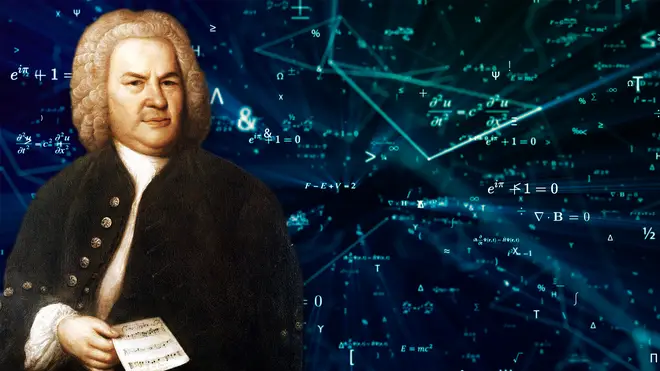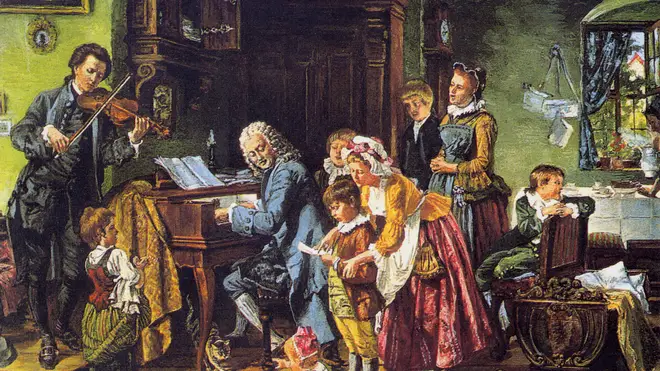On Air Now
Early Breakfast with Lucy Coward 4am - 6:30am
5 February 2024, 17:39 | Updated: 6 February 2024, 10:51

Mathematicians analysed hundreds of Bach’s works, from toccatas to preludes, cantatas and chorales, and discovered his music may be even more impressive than we realised...
It’s no secret that J.S. Bach is one of the greatest composers of all time. Father of the fugue and organ music master, he was an immensely prolific musician, writing more than 1100 pieces in his lifetime.
Bach’s intricate and detailed approach to melody and harmony inspired generations of composers that followed. His compositional technique continues to form the musical foundation for budding musicians around the world, of all genres.
The composer himself had an intensely mathematical brain. He would sign his name in music, and would even hide little references to the numbers 14 and 41, which acted as his numerical signature, in his works.
Now, a mathematical study has revealed that Bach’s music may be even more intricate than we thought.
Researchers from the University of Pennsylvania have analysed hundreds of pieces of Bach’s music to investigate how well these works can convey information – and the results are fascinating for both the mathematically and musically inclined.
Read more: Double bassist plays Bach’s Suite No.1 for solo cello – and it sounds utterly glorious

Lucy plays enchanting Bach prelude in Royal Albert Hall debut at Classic FM Live
The study is all about how effectively Bach’s music communicates with its listeners, and the connections our brains make without us even realising.
Imagine a musical scale on a piano, but the last note is left unplayed. Even though you haven’t heard it, intuitively you know which note should follow next.
That’s because you’ve heard the same sequence of notes enough times that your brain has made the automatic connection between the penultimate and final notes of a scale.
Now imagine that in the context of a full piece of music. Often, you may be able to predict the next note in a melody based on what you’ve heard so far, but sometimes you’re surprised by a note you weren’t expecting. It’s that satisfying feeling of building tension and releasing it that gives music its power.
In this new study on Bach’s music, mathematician Suman Kulkarni and her colleagues at the University of Pennsylvania are interested in how effectively Bach gives his listeners that information through his music, in order to surprise and delight their ears and minds.
Read more: ‘Happy Birthday’ – but it’s in the style of a Johann Sebastian Bach fugue

To be able to mathematically analyse it, Bach’s music was deconstructed into a network-like diagram charting how information is passed through a series of notes.
Simply put, these diagrams showed all the possible note combinations for each piece, weighted by the number of times this transition occurred. For example, if the note ‘A’ was followed by the note ‘B’ 10 times in the same piece, a weight of 10 would be applied to that transition.
Once these networks were built, the researchers were left with a way to calculate just how effective each of Bach’s pieces are at conveying all-important information to its listeners, and compared the results against each other and a neutral alternative.
Read more: 10 of Bach’s all-time best pieces of music

Organist Anna Lapwood plays an epic Bach Fantasia at the Royal Albert Hall | Classic FM
The researchers found that Bach’s music is highly efficient at communicating information through its network, with preludes and toccatas coming out on top, while chorales were slightly less so.
The researchers suggest that this difference could be caused by the purpose of each form of music. Chorales are sung in church settings, creating an environment for worship and meditation, where simplicity is key. Meanwhile, preludes and toccatas were often composed for entertainment purposes, where more musical variation creates excitement and interest.
All in all, the researchers say this makes it easier for our brains to learn the patterns to Bach’s music, and they hope their work will inspire others to look into how science and music combine in the enjoyment of our favourite music.
Perhaps their next study could also make Bach’s music easier to learn to play…